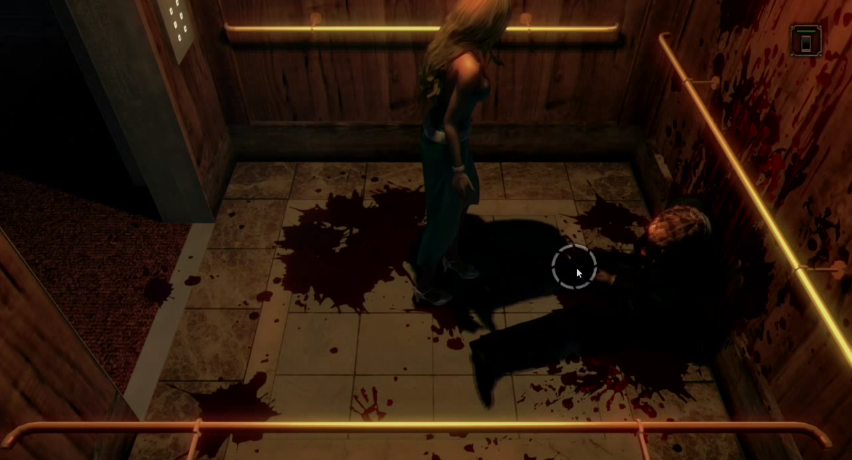However, things quickly took a turn for the worse. funding slowed to a trickle of around $1,000 per day only a few days after the campaign launched. As someone who has watched many campaigns succeed and fail over the years, I can say this did not bode well. All campaigns except for the most outrageously funded tend to reach a plateau state before picking up again near the end. But such a low plateau – and so early on? I was worried, as were backers. Of course, if you check out the campaign page for NightCry today you’ll see it succeeded with $314,772 raised of a $300,000 goal. How did Nude Maker and Playism Games achieve this near miracle? That’s what we’re looking to find out.
Thanks to our recent interview with Hifumi Kono himself we’ve got a better idea as to how they made it work. He attributed a great deal of success to social networking sites, but also to doing some networking of his own in order to receive backing from folks who had a lot of money to share. Without looking at the “background” of funding trends for NightCry it’s hard to imagine the impact. Here’s a chart showing daily accumulated pledges, total backer counts, and the “average” contribution of each backer. Average is in quotes because the result is not related to actual contribution per backer. Instead, it is meant to illustrate that a few people’s contributions were so huge that they skewed the averages very high. Note that the included dates are only from the last two weeks of campaign as that’s when it received an uptake in funding.
As is now quite apparent, a few days really made NightCry a success: February 13, 16-22. That’s just eight days (aside from the initial three) of thirty! When you consider that a campaign asking for $300,000 needs seriously huge donation days, there were really only four of those: February 13, 17, 18, 20. Remember, the Kickstarter ended on February 23. Just those four $30,000+ funding days alone generated $151,256. This means half of all funding was generated during 7.5% of the campaign period. It’s outrageous and nearly unbelievable, but they made it! With that said, it’s hard to say that the steps they pursued to save their campaign could be applied by any struggling campaign out there. After all, NightCry had some very special circumstances around it.
For of all, Clock Tower is an established property with a fan following. The devoted fans may not be as large in North America, but classic horror fans are certainly out there! As was mentioned during our interview, horror community outreach was increased (beyond even the fold of video games) because horror fans as a whole are a pretty helpful bunch. Quickly checking “NightCry” in social media aggregate engines reveals that fans were sharing the word across YouTube, Twitter, Tumblr, and many other sites. Beyond this, Hifumi Kono has been in the video game industry long enough to have established connections with many other creators. Having a group of talented peers aided with NightCry’s star-filled development team, but apparently some of his peers have deep pockets. Just how much did these deep spenders contribute? I wish I knew!
One method of getting a vague sense is by checking out backer tiers. The top tiers on NightCry’s campaign was $10,000 and restricted to nine backers. Guess what? All of these were sold out. A good deal of the other $1,200+ tiers were also packed with backers. Of course, some folks out there may have pledged great sums of money to no tier at all, but if so only project creators will ever know those contribution amounts. In any case, people were pushing hard for this new horror title’s Kickstarter to make it. As is evidenced by the upswing late during the campaign, it seems that time pressure pushed people to pledge big.
Despite internal worries and concerns about a potential relaunch, NightCry’s Kickstarter page never exposed those fears. Instead, they continued trucking along with new gameplay videos, updates, art, and words from other esteemed people in the video game industry. They averaged around 1-2 days between updates, and unlike some campaigns, ensured that each update was worth posting. Early ones showcased storyline and character outlines while later ones pushed to more discussion of gameplay mechanics. Along they way backer rewards were showcased (such as a ridiculous life size version of the killer’s scissors), t-shirts, and the boxed version. Posts of this nature definitely draw attention and more than likely resulted in additional backing.
Finally, one cannot ignore the potential power that stretch goals have – in particular, ones related to console ports. A stretch goal for PS4 was revealed in the February 13 update. Hey, isn’t that date familiar? Yes, it’s when $32,224 bucks made it into the Kickstarter. Although they didn’t reach this stretch goal it certainly served a purpose. It got many folks interested when they weren’t before. Now, even if no console version ever arrives, NightCry will still have its PC release.
In all, NightCry was an incredibly stressful but exciting campaign. Day one made it appear like a rousing success, while subsequent days revealed it was actually in a dangerous position. Thanks to a powerful mix of social networking sites and users, continued attention to improving and showcasing gameplay, potential super backers, as well as exciting the console audience with stretch goals, NightCry sidestepped disaster. All crowdfunding campaigns have different situations, but let this be a lesson to potential (or failed) project creators out there: never give in. Congratulations to Project Scissors: NightCry as it continues its journey to launch. Here’s hoping their roller coaster of a campaign didn’t rattle them up too much!







